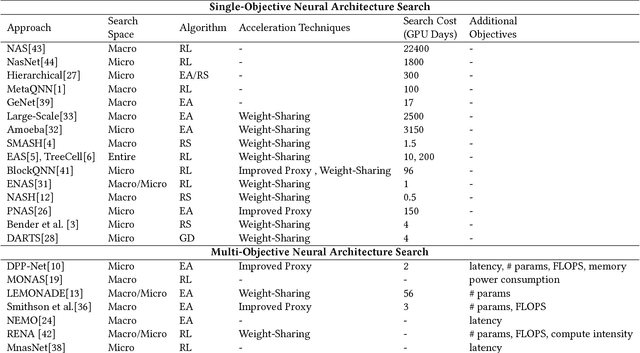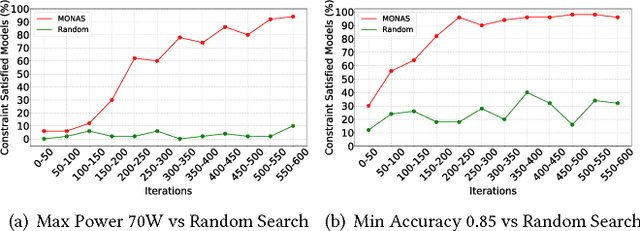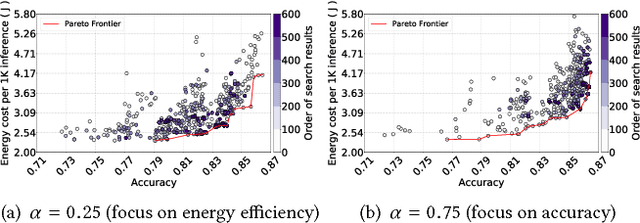Chi-Hung Hsu
Searching Toward Pareto-Optimal Device-Aware Neural Architectures
Aug 30, 2018



Abstract:Recent breakthroughs in Neural Architectural Search (NAS) have achieved state-of-the-art performance in many tasks such as image classification and language understanding. However, most existing works only optimize for model accuracy and largely ignore other important factors imposed by the underlying hardware and devices, such as latency and energy, when making inference. In this paper, we first introduce the problem of NAS and provide a survey on recent works. Then we deep dive into two recent advancements on extending NAS into multiple-objective frameworks: MONAS and DPP-Net. Both MONAS and DPP-Net are capable of optimizing accuracy and other objectives imposed by devices, searching for neural architectures that can be best deployed on a wide spectrum of devices: from embedded systems and mobile devices to workstations. Experimental results are poised to show that architectures found by MONAS and DPP-Net achieves Pareto optimality w.r.t the given objectives for various devices.
MONAS: Multi-Objective Neural Architecture Search using Reinforcement Learning
Jun 27, 2018



Abstract:Recent studies on neural architecture search have shown that automatically designed neural networks perform as good as human-designed architectures. While most existing works on neural architecture search aim at finding architectures that optimize for prediction accuracy. These methods may generate complex architectures consuming excessively high energy consumption, which is not suitable for computing environment with limited power budgets. We propose MONAS, a Multi-Objective Neural Architecture Search with novel reward functions that consider both prediction accuracy and power consumption when exploring neural architectures. MONAS effectively explores the design space and searches for architectures satisfying the given requirements. The experimental results demonstrate that the architectures found by MONAS achieve accuracy comparable to or better than the state-of-the-art models, while having better energy efficiency.
 Add to Chrome
Add to Chrome Add to Firefox
Add to Firefox Add to Edge
Add to Edge